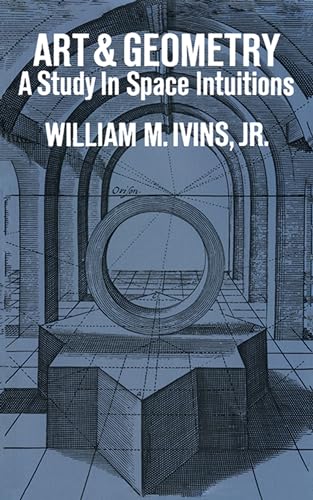
Sinossi
Le informazioni nella sezione "Riassunto" possono far riferimento a edizioni diverse di questo titolo.
Dalla quarta di copertina
Le informazioni nella sezione "Su questo libro" possono far riferimento a edizioni diverse di questo titolo.
Altre edizioni note dello stesso titolo
Risultati della ricerca per Art and Geometry a Study in Space Intuitions
Art and Geometry: A Study in Space Intuitions (Dover Books on Art History S)
Da: World of Books (was SecondSale), Montgomery, IL, U.S.A.
Condizione: Good. Item in good condition. Textbooks may not include supplemental items i.e. CDs, access codes etc. Codice articolo 00095466949
Compra usato
Quantità: 1 disponibili
Art and Geometry: A Study in Space Intuitions (Dover Books on Art History S)
Da: Wonder Book, Frederick, MD, U.S.A.
Condizione: Good. Good condition. A copy that has been read but remains intact. May contain markings such as bookplates, stamps, limited notes and highlighting, or a few light stains. Codice articolo N13O-00681
Compra usato
Quantità: 1 disponibili
Art and Geometry: A Study in Space Intuitions (Dover Books on Art History S)
Da: Wonder Book, Frederick, MD, U.S.A.
Condizione: Very Good. Very Good condition. A copy that may have a few cosmetic defects. May also contain light spine creasing or a few markings such as an owner's name, short gifter's inscription or light stamp. Codice articolo L14A-03753
Compra usato
Quantità: 1 disponibili
Art and Geometry: A Study in Space Intuitions (Dover Books on Art History S)
Da: HPB-Diamond, Dallas, TX, U.S.A.
Paperback. Condizione: Very Good. Connecting readers with great books since 1972! Used books may not include companion materials, and may have some shelf wear or limited writing. We ship orders daily and Customer Service is our top priority! Codice articolo S_446325937
Compra usato
Quantità: 1 disponibili
Art and Geometry: A Study in Space Intuitions
Da: ThriftBooks-Reno, Reno, NV, U.S.A.
Paperback. Condizione: Good. No Jacket. Pages can have notes/highlighting. Spine may show signs of wear. ~ ThriftBooks: Read More, Spend Less. Codice articolo G0486209415I3N00
Compra usato
Quantità: 1 disponibili
Art and Geometry: A Study in Space Intuitions
Da: ThriftBooks-Phoenix, Phoenix, AZ, U.S.A.
Paperback. Condizione: Good. No Jacket. Pages can have notes/highlighting. Spine may show signs of wear. ~ ThriftBooks: Read More, Spend Less. Codice articolo G0486209415I3N00
Compra usato
Quantità: 1 disponibili
Art and Geometry : A Study in Space Intuitions
Da: Better World Books, Mishawaka, IN, U.S.A.
Condizione: Very Good. Used book that is in excellent condition. May show signs of wear or have minor defects. Codice articolo 8639839-6
Compra usato
Quantità: 1 disponibili
Art and Geometry : A Study in Space Intuitions
Da: Better World Books: West, Reno, NV, U.S.A.
Condizione: Good. Used book that is in clean, average condition without any missing pages. Codice articolo GRP73131255
Compra usato
Quantità: 1 disponibili
Art and Geometry : A Study in Space Intuitions
Da: Better World Books, Mishawaka, IN, U.S.A.
Condizione: Good. Former library book; may include library markings. Used book that is in clean, average condition without any missing pages. Codice articolo GRP13592048
Compra usato
Quantità: 1 disponibili
Art and Geometry: A Study in Space Intuitions
Da: ThriftBooks-Dallas, Dallas, TX, U.S.A.
Paperback. Condizione: Good. No Jacket. Pages can have notes/highlighting. Spine may show signs of wear. ~ ThriftBooks: Read More, Spend Less. Codice articolo G0486209415I3N00
Compra usato
Quantità: 1 disponibili

